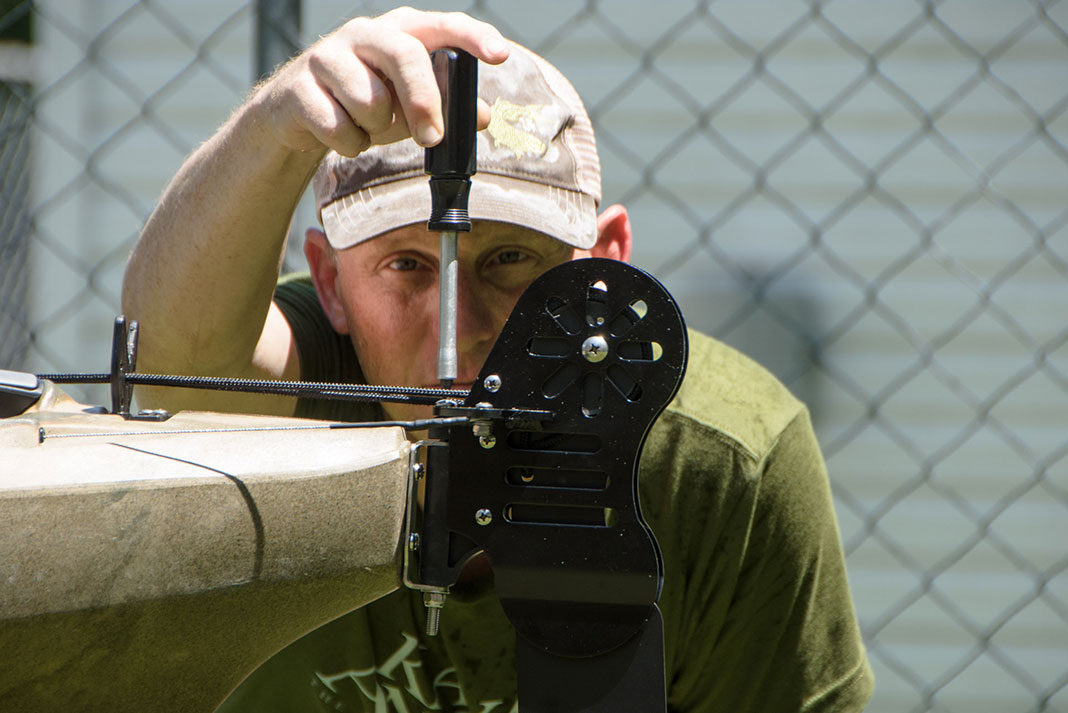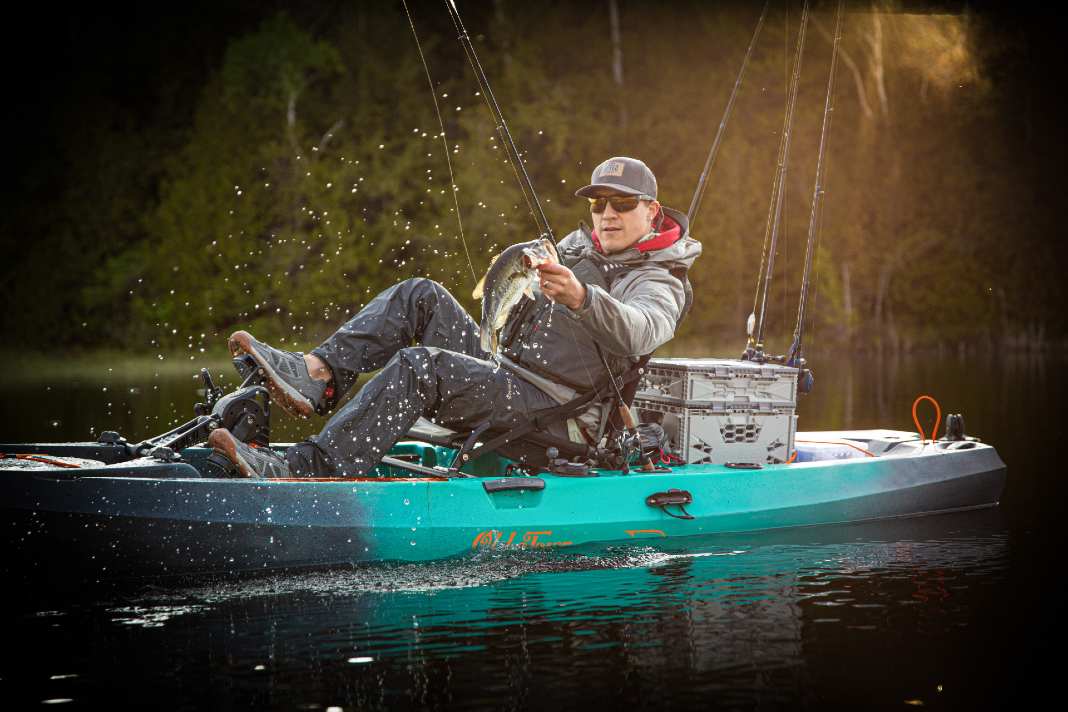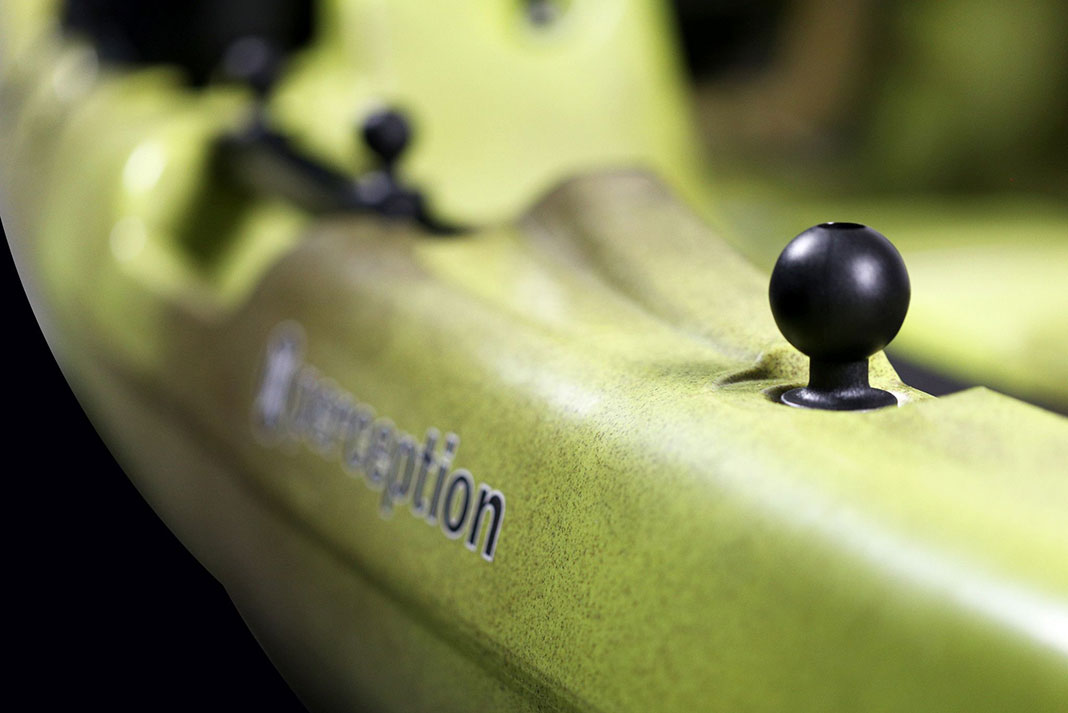Do I need a rudder on my fishing kayak? Seems like a simple question, but the answer involves engineering, ergonomics, mechanics and philosophy. Ask 10 anglers and you’ll get 10 answers.
Why You Need a Rudder, and Why You Don’t
We went to two gurus—pro angler Rob Choi and kayak designer Bob McDonough—for the final answer to the first question paddle anglers ask.
Hanging Rudders vs. Integrated Rudders
Bob McDonough is lead designer at Johnson Outdoors. His name is on some of the most popular kayaks on the water. When we asked if he uses a rudder, McDonough said, “Since I’m in so many kayaks, I’m all over the board.” When it comes to fishing kayaks, McDonough prefers a rudder “100 percent.”
A rudder improves tracking and slow-speed turning. “Something especially benefiting kayak anglers,” he says.
McDonough uses hanging rudders on his boats. “The rudder extends deeper into the water, so it continues to turn the boat in rough conditions.”

A hanging rudder can be lifted out of the way. “Lifting and lowering the rudder can be awkward,” McDonough admits. He looks for a rudder with enough surface area to turn the kayak without being too large and increasing drag when down and wind resistance when up. One advantage of the integrated rudder, which is tucked under the stern, is it improves tracking when it isn’t turned. Integrated rudders are most common on pedal kayaks.
When purchasing a pedal kayak, consider how you will use the boat. The wide, integrated rudder improves handling compared to a hanging rudder. Tucked under the stern, this type of rudder will also draw less water. However, it cannot be retracted in shallow water, making you more susceptible to rocks and debris.
Handling Gains Help You Go That Extra Mile
For Johnson Outdoors pro Rob Choi, installing a rudder on his kayak was more a philosophical decision.
On one hand, a rudder will improve turning and tracking. On the other hand, the rudder increases wind resistance and drag. Choi considered the abuse his kayak takes forging through the surf, traversing shallow water and fishing in heavy structure. Some environments are too rough for a rudder.
“Paddlers who have never used a rudder will notice some drag,” Choi admits, but he believes the advantages outweigh any effect on performance. “I can paddle straight without having to make correctional strokes,” Choi says, which saves energy and time, especially when he’s covering long distances.
Travelling across open water with opposing current and wind will cause a kayak to veer off course or spin. The problem can be worse when you add weight, like camping gear, a livewell full of water or a hold filled with fish. “I don’t want to fight the kayak,” Choi explains. Angling the rudder helps the kayak travel straight. “I can save my energy for paddling forward.”
“I can paddle straight without having to make correctional strokes.”
Rudders help when fishing tight places, too. “When I’m casting or jigging, I can change the direction of my drift or turn my boat in the current,” he adds.
Choi wraps it up like this: A rudder will improve handling at the expense of little speed.
In the raised position, the rudder acts like a sail catching the wind and slowing or turning the boat. In the down position, the blade presents slightly more drag slowing the kayak. If you fish in rocky rivers or spend a lot of time launching through the surf, a rudder may not last long.
Does Your Fishing Kayak Need a Rudder?
Remembering to lift the rudder before hitting bottom is a minor inconvenience, but it could be a big deal if you’re into kayak fishing for the simplicity. Paddle long distances with a heavily loaded kayak, a rudder will save time and energy. Even compact kayaks used for short distances and tight quarters can be aided by a rudder.
So, does your fishing kayak need a rudder? Well, ultimately it’s up to you. We can only try to steer you straight.
This article was first published in the Fall 2018 issue of Kayak Angler Magazine. Subscribe to Kayak Angler Magazine’s print and digital editions, or browse the archives.
Hard question to answer, but easy to install. | Feature Photo: Daria Burnley









The integrated rudder could be used as one would a skeg on a traditional kayak. In both cases they are meant to assist in steering, not actually used as the primary means of steering – that’s what paddles are for. However, in a work of quasi-kayaks (SOT with pedals, not paddles) it would be foolish and short-sighted not to be able to have the use of a rudder mechanism to help guide your boat when situations require some finesse that clunky, mechanical pedals just cannot provide.
I have a >16 year old Hobie Mirage pedaling kayak which the I (and my family) use for fun on a lake in NZ … not fishing! Some totally inexperienced young friends of the family managed to capsize the kayak and in sorting this awkward situation, they broke the rudder lifting control line. Capsizing this kayak is something I just do not d! My family will not be permitted to use it in future if they are not confident enough to keep it upright. I have fixed the rudder line with a new length of cord, but with incredible difficulty. In principle, the old line should be able to pull a new length through, but the new length had to be sewed to the old length … a knot will not pass through the plastic piping.
I am looking for advice! How would you, or an expert you know, set about replacing the rudder control lines inside the hull of this Hobie Mirage?